
A golf ball is a special ball designed to be used in the game of golf.
Under the rules of golf, a golf ball has a mass no more than 1.620 oz, has a diameter not less than 1.680 inches, and performs within specified velocity, distance, and symmetry limits. Like golf clubs, golf balls are subject to testing and approval by The R&A (formerly part of the Royal and Ancient Golf Club of St Andrews) and the United States Golf Association, and those that do not conform with regulations may not be used in competitions.
It is commonly believed that hard wooden, round balls were the first balls used for golf between the 14th through the 17th centuries. Though they were no doubt used for other similar contemporary stick and ball games, made from hardwoods such as beech and box trees, there is no definite evidence that they were used in golf in Scotland. It is equally, if not more likely, that leather balls filled with cows' hair were used, imported from the Netherlands from at least 1486 onward. Then or later, the featherie ball was developed and introduced. A featherie, or feathery, is a hand-sewn round leather pouch stuffed with chicken or goose feathers and coated with paint, usually white in color. A standard featherie used a gentleman's top hat full of feathers. The feathers were boiled and softened before they were stuffed into the leather pouch. Making a featherie was a tedious and time-consuming process. An experienced ball maker could only make a few balls in one day, so they were expensive. A single ball would cost 2–5 shillings, which is equivalent to US$10–20 today.
There were a few drawbacks to the featherie. First, it was difficult to make a perfectly spherical ball, so the featherie often flew irregularly. Second, when the featherie became too wet, its distance would be reduced, and there was a possibility of its splitting open upon impact, both when hit or when contacting the ground or another hard surface. Despite these drawbacks, the featherie was a dramatic improvement over the wooden ball, and remained the standard golf ball well into the 19th century.
In 1848, the Rev. Dr. Robert Adams Paterson (sometimes spelled Patterson) invented the gutta-percha ball (or guttie, gutty). The guttie was made from dried sap of the Malaysian sapodilla tree. The sap had a rubber-like feel and could be made spherical by heating and shaping it in a mold. Because gutties were cheaper to produce, could be re-formed if they became out-of-round or damaged, and had improved aerodynamic qualities, they soon became the preferred ball for use. Accidentally, it was discovered that nicks in the guttie from normal use actually provided a ball with a more consistent ball flight than a guttie with a perfectly smooth surface. Thus, makers began intentionally making indentations into the surface of new balls using either a knife or hammer and chisel, giving the guttie a textured surface. Many patterns were tried and used. These new gutties, with protruding nubs left by carving patterned paths across the ball's surface, became known as "brambles" due to their resemblance to bramble fruit (blackberries).
The next major breakthrough in golf ball development came in 1898. Coburn Haskell of Cleveland, Ohio, had driven to nearby Akron, Ohio, for a golf date with Bertram Work, the superintendent of the B.F. Goodrich Company. While he waited in the plant for Work, Haskell picked up some rubber thread and wound it into a ball. When he bounced the ball, it flew almost to the ceiling. Work suggested Haskell put a cover on the creation, and that was the birth of the 20th century wound golf ball that would soon replace the guttie bramble ball. The new design became known as the rubber Haskell golf ball. For decades, the wound rubber ball consisted of a liquid-filled or solid round core that was wound with a layer of rubber thread into a larger round inner core and then covered with a thin outer shell made of balatá sap. The balatá is a tree native to Central and South America and the Caribbean. The tree is tapped and the soft, viscous fluid released is a rubber-like material similar to gutta-percha, which was found to make an ideal cover for a golf ball. Balatá, however, is relatively soft. If the leading edge of a highly lofted short iron contacts a balatá-covered ball in a location other than the bottom of the ball a cut or "smile" will often be the result, rendering the ball unfit for play.
In the early 1900s, it was found that dimpling the ball provided even more control of the ball's trajectory, flight, and spin. David Stanley Froy, James McHardy, and Peter G. Fernie received a patent in 1897 for a ball with indentations; Froy played in the Open in 1900 at the Old Course at St. Andrews with the first prototype. Players were able to put additional backspin on the new wound, dimpled balls when using more lofted clubs, thus inducing the ball to stop more quickly on the green. Manufacturers soon began selling various types of golf balls with various dimple patterns to improve the length, trajectory, spin, and overall "feel" characteristics of the new wound golf balls. Wound, balatá-covered golf balls were used into the late 20th century.
In the mid-1960s, a new synthetic resin, an ionomer of ethylene acid named Surlyn was introduced DuPont as were new urethane blends for golf ball covers, and these new materials soon displaced balatá as they proved more durable and more resistant to cutting. Along with various other materials that came into use to replace the rubber-wound internal sphere, golf balls came to be classified as either two-piece, three-piece, or four-piece balls, according to the number of layered components. These basic materials continue to be used in modern balls, with further advances in technology creating balls that can be customized to a player's strengths and weaknesses, and even allowing for the combination of characteristics that were formerly mutually-exclusive.
Liquid cores were commonly used in golf balls as early as 1917. The liquid cores in many of the early balls contained a caustic liquid, typically an alkali, causing eye injuries to children who happened to dissect a golf ball out of curiosity. By the 1920s, golf ball manufacturers had stopped using caustic liquids, but into the 1970s and 1980s golf balls were still at times exploding when dissected and were causing injuries due to the presence of crushed crystalline material present in the liquid cores.
In 1967, Spalding purchased a patent for a solid golf ball from Jim Bartsch. His original patent defined a ball devoid of the layers in earlier designs, but Bartsch's patent lacked the chemical properties needed for manufacturing. Spalding's chemical engineering team developed a chemical resin that eliminated the need for the layered components entirely. Since then, the majority of non-professional golfers have transitioned to using solid core (or "2-piece") golf balls.
The specifications for the golf ball continue to be governed by the ruling bodies of the game; namely, The R&A, and the United States Golf Association (USGA).
If you are interested, here's a lot more to read about golf balls...
https://en.wikipedia.org/wiki/Golf_ball
The ranch-flavored tortilla chips and sweet-and-spicy French dressing really add a whole other layer of flavor to this impressive Taco Salad. Set this beautiful salad out in a clear bowl, and watch as they rush to fill their plates up!
- 1 pound ground beef
- 1 (1-1/4-ounce) package dry taco seasoning mix
- 1 head iceberg lettuce, chopped (about 8 cups)
- 2 cups (8 ounces) shredded cheddar cheese
- 1 (16-ounce) can kidney beans, rinsed and drained
- 2 large tomatoes, diced (about 2 cups)
- 2 (2.25-ounce) cans sliced black olives, drained
- 1 (14-1/2-ounce) bag ranch-flavored tortilla chips, crushed
- 1 (16-ounce) bottle sweet-and-spicy French salad dressing
- In a medium skillet, brown ground beef with the taco seasoning, cooking until meat is crumbled and no pink remains; drain and cool.
- In a trifle or large salad bowl, layer half the lettuce, half the cheese, the beans, ground beef, tomatoes, and olives. Repeat layers, then top with crushed tortilla chips.
- Before serving, add dressing and toss to coat well.
1919 – Marge Champion, American actress (d.2020)
1951 – Mark Harmon, American actor







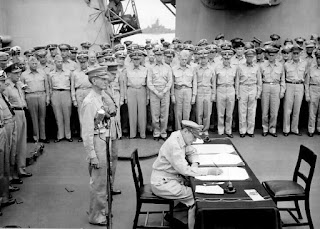



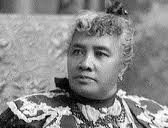
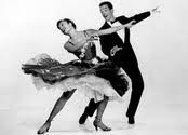

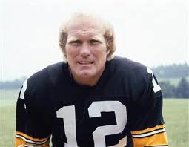

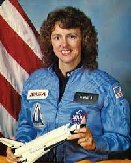


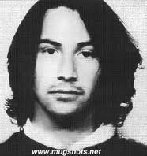
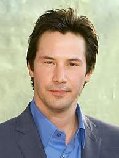



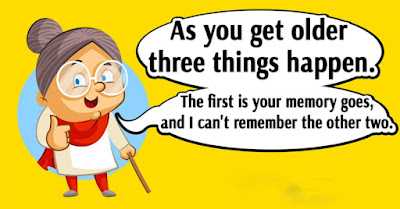
2 comments:
Another interesting post. Always enjoy your blog.
Hope you have a wonderful birthday, my friend. Xoxo Trisha
Post a Comment